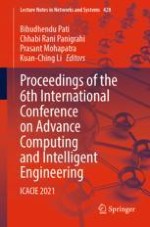2023 | OriginalPaper | Chapter
A Deep Learning-Based Model for Arrhythmia Detection Using Feature Selection and Machine Learning Methods
Authors : Santosh Kumar, Bharat Bhushan, Lekha Bhambhu, Debabrata Singh, Dilip Kumar Choubey
Published in: Proceedings of the 6th International Conference on Advance Computing and Intelligent Engineering
Publisher: Springer Nature Singapore
Activate our intelligent search to find suitable subject content or patents.
Select sections of text to find matching patents with Artificial Intelligence. powered by
Select sections of text to find additional relevant content using AI-assisted search. powered by
